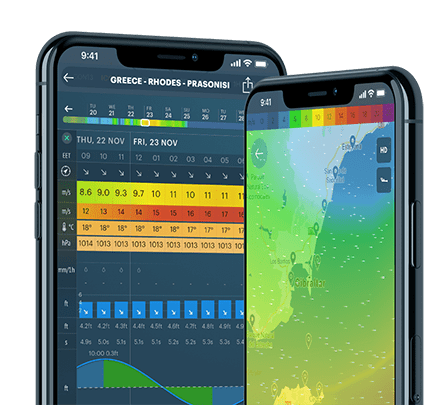
Where in the sky do elves and trolls come from?
In our last edition, we told you about red sprites. But there are even rarer phenomena to be found in the sky—so rare that they are named after fairytale creatures. It’s about time we told you about these creatures, which are fantastic but not from the realms of fantasy.
A new class of celestial creatures
All these phenomena are types of discharges in the upper atmosphere, or TLE (Transient Luminous Events).
Also known as ionospheric lightning, these bright multicolored flashes over severe thunderstorms occur very high up—from 50 to 100 kilometers above sea level. This is significantly higher than normal lightning, not found above 16 kilometers.
While ordinary lightning can reach temperatures of 30,000 degrees Celsius, red sprites (from the word «spirit») and other TLEs are not considered to be types of regular lightning, because of their low, almost room-temperature, discharges.
The study of TLEs began with the first sprite in a photo in 1989, when it became clear that these phenomena existed, and were not merely somebody’s hallucinations.
Then it turned out that sprites are not the only variety! Since 1989, about a dozen separate types of TLE have been identified, each different in shape, size, and color. Since then, these TLEs have been caught on film and video hundreds of times. They have been spotted both from the ground and from outer space.

A diagram with the locations, colors, and shapes of different TLEs. Valerya Milovanova / Windy.app
The nature of these phenomena, although associated with thunderclouds and lightning, is still not fully understood. Some have been caught on camera only recently.
Elves
The first discovery after sprites was elves, or ELVES (Emission of Light and Very low frequency perturbations due to Electromagnetic pulse Sources).
The first elf was spotted literally by a spacecraft—the space shuttle Columbia in 1990. Elves appear as glowing red disks up to 400 kilometers(!) in diameter at an altitude of 100 kilometers (almost in space), which appear and disappear in just a thousandth of a second.
It is believed that the glow of the elves is not caused by the lightning itself far below, as in the case of sprites, but by an electromagnetic pulse—a radio wave moving upward from the lightning.

An elf caught over Italy in 2017. Photo: Valter Binotto
A radio wave is made up of particles of light called photons, whose energy is not great enough to be seen by the human eye. But when a radio wave reaches the top of the atmosphere, it causes local electrons and other particles to accelerate.
These electrons, in turn, hit the rare air particles, which in this case are mostly nitrogen, and transfer some of their energy to these. But nitrogen atoms, like everything in the universe, strive for equilibrium, so they quickly dump the extra energy in the form of reddish light particles (photons), forming an elf.
Elves should not be confused with sprite halos. Although sprite halos have a similar disk shape, they form at a lower altitude than elves, at an altitude of about 70-80 kilometers. Elves can appear independently; halos can only be found together with sprites, as a part of their formation.
Ghosts
We read last time that sprites are cold red discharges of energy, from the top of a thundercloud into the upper atmosphere, occuring high in the sky just after normal lightning forms far below.

The only alleged ghost photo in the public domain where a green glow is visible. Photo: Thomas Ashcraft
Sprites are hard enough to catch as it is, but in one case out of a hundred, it happens that sprites give rise to an even rarer phenomenon, called a ghost.
Ghosts can be found at altitudes between 50 and 85 kilometers. It is believed that they form in the same way as sprites; however, in ghosts, the particles excited by the electrons of cold discharge are not nitrogen. Instead, they are iron and nickel particles left over from meteors that burned up in the atmosphere.
Since meteors have an extraterrestrial origin, the glow of these ghosts is, in other words, the glow of alien metals.
Scientists were only able to take the first reliably confirmed photo of a ghost (though without the inherent green glow that makes ghosts so unique) in 2019. This is one of the rarest TLEs, and the hunt to capture them on film continues.
Trolls, pixies, and gnomes
Transient luminous events are a new and poorly studied set of phenomena. Because of this, it is not uncommon to identify new types of TLEs and give each category different magical names. Since these phenomena are even less studied than sprites and elves, we do not yet have colorful photos, and they are not even always included in official classifications.
Sometimes, particularly powerful sprites leave behind trolls. These red spots with barely visible tails appear at the bases of sprites, leaving behind reddish trails going down to the thundercloud.
The white spots and dots above thunderstorms are called pixies. It is assumed that they are not directly related to lightning—they are less than 100 meters in diameter, each lasting about 16 milliseconds.
Small lightning occurrences, up to a kilometer high, traveling up from a thunderstorm cloud, have been called gnomes. Gnomes are probably failed blue jets, much more spectacular, well-studied, and larger TLEs, which we will be sure to feature in future articles.
Text: Jason Bright, a journalist, and a traveler
Cover photo: Greg Rakozy / Unsplash
Read more:
The five main layers of atmosphere
Why do we see a circle around the sun? Halo’s simple explanation
Latest News
Professional Weather App
Get a detailed online 10 day weather forecast, live worldwide wind map and local weather reports from the most accurate weather models.
Compare spot conditions, ask locals in the app chat, discover meteo lessons, and share your experience in our Windy.app Community.
Be sure with Windy.app.



